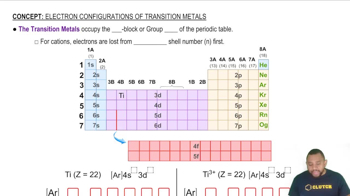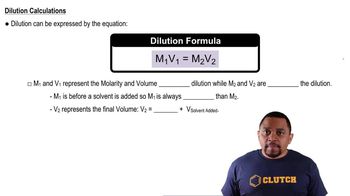Here are the essential concepts you must grasp in order to answer the question correctly.
Net Ionic Equations
A net ionic equation represents the chemical species that are involved in a reaction, excluding spectator ions. It focuses on the actual chemical change occurring in the solution, providing a clearer picture of the reaction. To write a net ionic equation, one must first write the balanced molecular equation, then dissociate the soluble ionic compounds into their ions, and finally eliminate the spectator ions.
Recommended video:
Reactivity of Metals
The reactivity of metals with acids varies significantly among different elements. Some metals, like zinc and magnesium, readily react with dilute acids to produce hydrogen gas, while others, such as silver and gold, do not react at all. Understanding the reactivity series of metals helps predict whether a specific metal will react with an acid and the products formed during the reaction.
Recommended video:
Dilute Sulfuric Acid
Dilute sulfuric acid (H2SO4) is a strong acid that can donate protons (H+) in solution, facilitating reactions with metals. In the context of metal-acid reactions, it can lead to the formation of hydrogen gas and metal sulfate salts. The concentration of the acid influences the extent of the reaction, and in some cases, certain metals may not react with dilute sulfuric acid, leading to a notation of 'N.R.' for no reaction.
Recommended video:
 Verified step by step guidance
Verified step by step guidance

